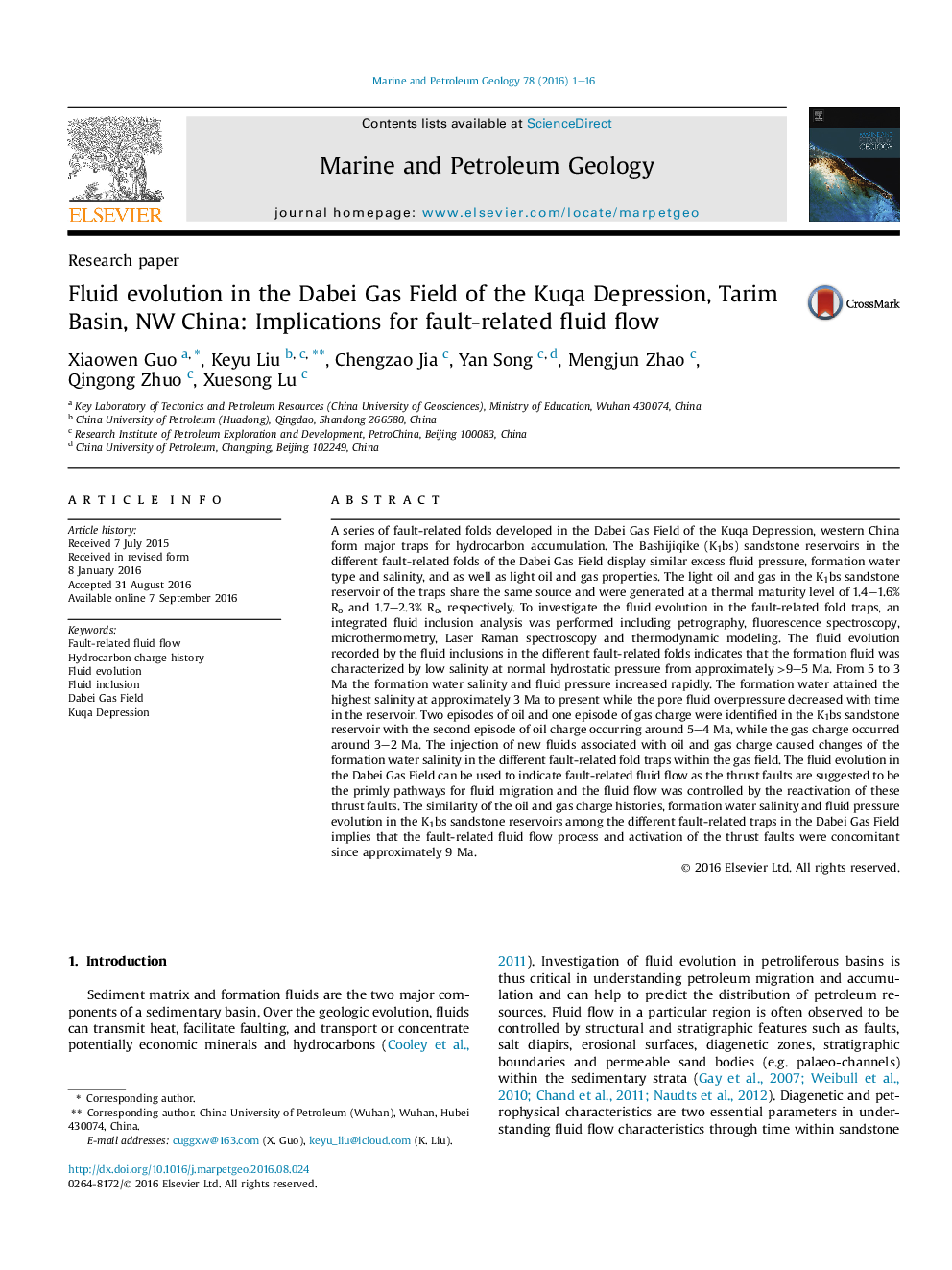| کد مقاله | کد نشریه | سال انتشار | مقاله انگلیسی | نسخه تمام متن |
|---|---|---|---|---|
| 6434367 | 1637149 | 2016 | 16 صفحه PDF | دانلود رایگان |

- Investigation the hydrocarbon charge history through fluid inclusion analysis.
- Determine the fluid evolution by the paleo-fluid pressure and salinity.
- Identification the thrust fault-related fluid flow by fluid evolution.
A series of fault-related folds developed in the Dabei Gas Field of the Kuqa Depression, western China form major traps for hydrocarbon accumulation. The Bashijiqike (K1bs) sandstone reservoirs in the different fault-related folds of the Dabei Gas Field display similar excess fluid pressure, formation water type and salinity, and as well as light oil and gas properties. The light oil and gas in the K1bs sandstone reservoir of the traps share the same source and were generated at a thermal maturity level of 1.4-1.6% Ro and 1.7-2.3% Ro, respectively. To investigate the fluid evolution in the fault-related fold traps, an integrated fluid inclusion analysis was performed including petrography, fluorescence spectroscopy, microthermometry, Laser Raman spectroscopy and thermodynamic modeling. The fluid evolution recorded by the fluid inclusions in the different fault-related folds indicates that the formation fluid was characterized by low salinity at normal hydrostatic pressure from approximately >9-5 Ma. From 5 to 3 Ma the formation water salinity and fluid pressure increased rapidly. The formation water attained the highest salinity at approximately 3 Ma to present while the pore fluid overpressure decreased with time in the reservoir. Two episodes of oil and one episode of gas charge were identified in the K1bs sandstone reservoir with the second episode of oil charge occurring around 5-4 Ma, while the gas charge occurred around 3-2 Ma. The injection of new fluids associated with oil and gas charge caused changes of the formation water salinity in the different fault-related fold traps within the gas field. The fluid evolution in the Dabei Gas Field can be used to indicate fault-related fluid flow as the thrust faults are suggested to be the primly pathways for fluid migration and the fluid flow was controlled by the reactivation of these thrust faults. The similarity of the oil and gas charge histories, formation water salinity and fluid pressure evolution in the K1bs sandstone reservoirs among the different fault-related traps in the Dabei Gas Field implies that the fault-related fluid flow process and activation of the thrust faults were concomitant since approximately 9 Ma.
Journal: Marine and Petroleum Geology - Volume 78, December 2016, Pages 1-16